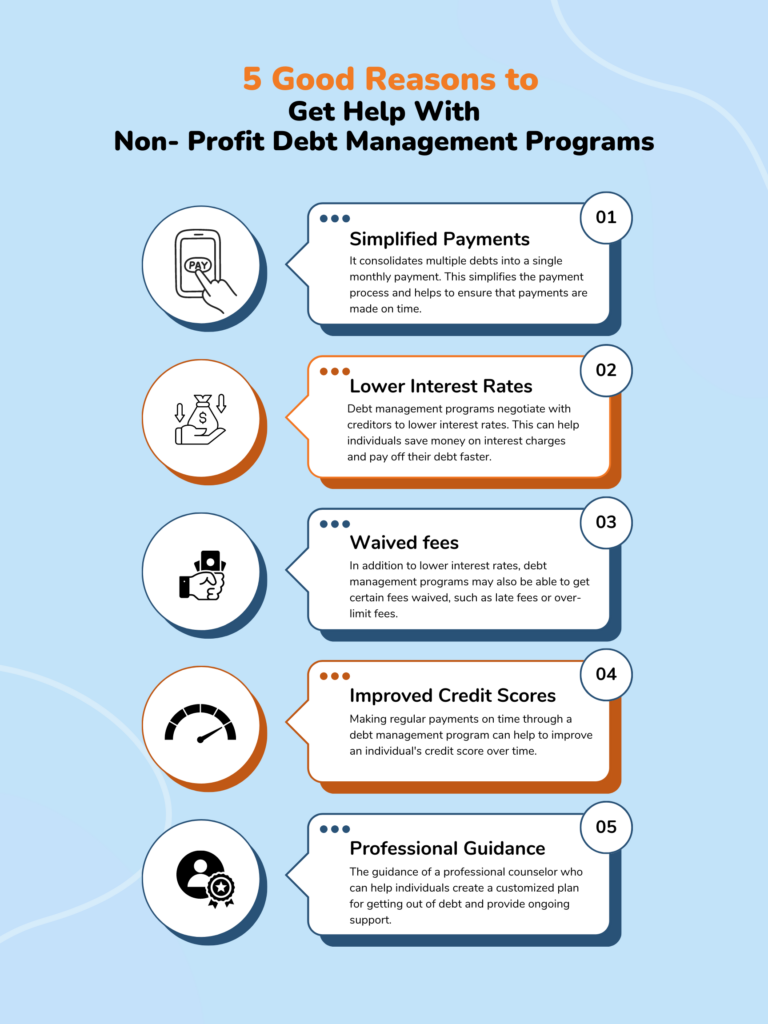Whatever You Need to Understand About Developing a Tailored Debt Administration Plan
In the world of individual money, creating a tailored financial obligation administration plan is frequently the keystone of attaining financial stability and satisfaction. By meticulously evaluating your present economic commitments, establishing possible financial goals, and crafting a functional budget plan, you pave the means for reliable debt settlement approaches. Nonetheless, the trip to economic freedom is not solely concerning first preparation; it additionally requires recurring surveillance and adjustments to ensure continued progression. As you navigate the complexities of developing a personalized financial debt administration plan, understanding the intricacies of each action is vital to your economic success.
Analyzing Your Present Financial Debt Scenario
One should initially carry out a comprehensive assessment of their current debt commitments prior to developing a reliable debt monitoring strategy. Create a detailed checklist of each financial obligation, including the complete amount owed, interest prices, minimal monthly payments, and due days.
After assembling this info, determine your total debt-to-income ratio by dividing your regular monthly debt payments by your monthly earnings. Comprehending these facets of your economic situation will guide you in developing a personalized debt monitoring strategy tailored to your particular requirements and goals.
Setting Financial Goals and Targets
:max_bytes(150000):strip_icc()/DebtRelief-TaxSCImage1-cff6f7bdca724678a200556285996221.png)
When establishing financial objectives, it is essential to be certain, quantifiable, achievable, pertinent, and time-bound (WISE) For example, you might establish a goal to pay off a specific quantity of financial obligation within a specific timespan, such as lowering your credit card balance by $5,000 in the following year - More Discussion Posted Here. By establishing clear targets similar to this, you can track your development and remain motivated to attain your financial obligation management goals
In addition, consider prioritizing your financial debts based on aspects such as interest rates, outstanding equilibriums, and settlement terms. By concentrating on high-interest financial obligations initially, you can save money in the lengthy run and increase your trip toward economic liberty. Remember, everyone's monetary situation is distinct, so customize your objectives and targets to fit your private needs and situations.
Producing a Realistic Budget Plan
Crafting a distinct spending plan is an essential action in efficient financial obligation administration and economic preparation. A practical budget plan serves as a roadmap for your economic wellness, assisting you track your income, expenditures, and financial debt settlements. To develop a useful budget, begin by providing all your resources of income.
On a regular basis review and adjust your budget as required to stay on track with your economic objectives and debt payment strategy. By adhering to a realistic budget plan, you can properly handle your debt and work in the direction of a more protected monetary future.
Discovering Debt Payment Methods
After developing a practical budget plan, the navigate to this website following critical step in effective financial obligation monitoring is to explore various financial obligation settlement techniques. One typical technique is the snowball approach, where you concentrate on settling the smallest financial obligations first while making minimum settlements on bigger financial obligations. This approach can help develop momentum as you see smaller debts being removed, providing motivation to tackle bigger ones.
Another approach is the avalanche approach, which entails focusing on financial obligations with the highest possible rate of interest. By targeting high-interest financial debts initially, you can minimize the overall amount you pay in interest with time. This approach may be a lot more economical over time, despite the fact that it could take longer to see specific financial debts totally settled.
Financial obligation combination is one more option where you incorporate several debts right into a solitary funding with a lower rate of interest. This can streamline your settlement procedure and possibly lower the complete rate of interest paid. Nonetheless, it's necessary to thoroughly think about the costs and terms associated with consolidation to guarantee it's the best choice for your monetary situation.
Tracking and Adjusting Your Strategy

Readjusting your strategy may entail reapportioning funds to take on high-interest debts first, discussing with creditors for reduced rate of interest prices or far better settlement terms, or discovering additional income resources to quicken financial debt settlement. As your monetary circumstance progresses, your financial debt monitoring plan ought to adjust as necessary to remain directory effective. By remaining aggressive and adaptable in tracking and adjusting your plan, you can optimize your efforts in the direction of repaying your financial debts successfully and accomplishing your monetary objectives.
Conclusion
In conclusion, developing a personalized financial debt monitoring plan involves assessing existing financial go obligation, establishing monetary objectives, creating a realistic spending plan, checking out payment strategies, and surveillance and readjusting the strategy as needed. By adhering to these steps, people can take control of their monetary situation and job towards coming to be debt-free. It is essential to stay self-displined and dedicated to the strategy in order to accomplish lasting monetary stability.
One must initially carry out a detailed analysis of their present financial obligation commitments prior to formulating a reliable financial obligation monitoring strategy.After establishing a practical spending plan, the following vital action in effective financial obligation administration is to explore various financial debt payment techniques - More Discussion Posted Here.To effectively handle your debt, continual tracking and change of your financial obligation management plan are necessary components for long-lasting economic security.Adjusting your plan may entail reapportioning funds to tackle high-interest financial obligations initially, negotiating with creditors for reduced interest rates or much better repayment terms, or exploring added revenue sources to speed up financial obligation settlement.In conclusion, producing a personalized financial obligation management plan includes examining existing financial debt, establishing economic objectives, developing a realistic budget, exploring repayment techniques, and monitoring and adjusting the plan as needed